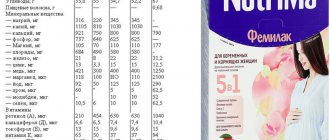Herpes
The concept of “herpes during pregnancy” is too broad and often becomes a cause for unreasonable panic among pregnant women who do not know what and in what cases there may be a threat to their unborn child. It is important for a pregnant woman to have information about all the features of this disease at different stages of pregnancy in order to contact a gynecologist in time and understand when there is really a danger to the fetus when a cold on the lips appears.
If a woman in an interesting situation has a recurrent form of the virus, that is, she had already encountered it before pregnancy, almost any manifestation of herpes is not dangerous for the mother and child. The simple herpes virus can be a threat during pregnancy only if it is a primary infection, especially in the early stages, when all the internal organs of the baby are developing and, most dangerously, the neural tube. Only in the case of primary infection in the early stages of pregnancy, up to the second trimester, does the virus pose a threat, as it can lead to frozen pregnancy, miscarriage, and developmental abnormalities. However, such a clinical situation is more likely to be an exception to the rule, because most women repeatedly experience herpes before pregnancy.
On the issue of diagnosing herpetic infection in pregnant women
Herpes simplex virus (HSV) is often the cause of the development of neurological, somatic and endocrine problems in newborns and older children [3]. The genital localization of herpes is especially dangerous, which occurs in 7–35% of cases in pregnant women [2, 6].
The purpose of this work was to study the optimization of the diagnosis of herpetic infection in pregnant women with a burdened obstetric and gynecological history (OAGA) in the dynamics of pregnancy.
74 multigravida women were examined: 49 primiparous and 25 multiparous. The age of the patients ranged from 20 to 41 years. All women had OAHA, and they were sent to MONIIAG with a diagnosis of “chronic herpes viral infection.” The study was carried out over time, starting from 16–24 weeks. pregnancy.
To identify HSV markers, virological (rapid culture method - RCM), molecular biological (PCR, real-time PCR) and serological (ELISA) methods were used. Blood, urine and urogenital scrapings were studied as clinical material from pregnant women. The viral load in various clinical materials was assessed by the amount of HSV DNA, which was determined by RT-PCR. For each sample, the value of the threshold cycle Ct (threshold cycle—the point at which fluorescence exceeds the background value) was recorded and the medians were calculated. The obtained threshold cycle (Ct) values were compared with the values of standard control samples with known DNA content in the sample. To assess the parameters of the humoral response, blood serum was examined by ELISA for the presence of specific antibodies to HSV (AT) of the IgM and IgG classes. The activity of antibodies, which was expressed in titers, and the avidity of IgG-AT, which was judged by the avidity index (AI), were also determined.
Among the examined pregnant women, there was a high level of infection: 43 (58%) of 74 women were diagnosed with some kind of urogenital infection (UGI) of viral and/or bacterial etiology. The method for diagnosing UGI is PCR with a qualitative assessment of the result. A detailed study of the anamnesis revealed that mixed UGI was identified in 21 (28%) pregnant women. The infection structure included a whole range of UGI pathogens: Ureaplasma urealiticum, Micoplasma hominis, Toxoplasma gondii, Gardnerella vaginalis, Chlamidia trahomatis, Candida albicans, Human papillomavirus. In 22 (30%) pregnant women, a single UGI pathogen was detected: Ureaplasma urealiticum - in 15 (20.4%), Micoplasma hominis - in 4 (5.4%). The patient had no complaints, and no clinical signs of infection were noted. Gardnerella vaginalis was found in 3 (4.2%) pregnant women.
At the first stage of the examination of patients, a comparative analysis of the frequency of detection of direct markers of HSV (infectious activity of the virus and HSV DNA) was carried out. None of these women had any clinical manifestations of genital herpes during the examination. The patient was considered infected if a viral marker was detected in at least one clinical material studied. During the entire examination period, HSV markers were detected in 18 (24.3%) pregnant women. At the same time, HSV DNA was detected in 15 (20.3%) pregnant women, and the infectious virus was detected in 3 (4%) women (Fig. 1). The differences in the frequency of detection of HSV DNA compared with infectiously active virus were statistically significant (p<0.05).
The frequency of detection of HSV in various clinical materials was determined. 525 biological materials from pregnant women were examined for the presence of direct markers of HSV: 175 samples of blood, urine and urogenital scrapings. When analyzing all studied samples using a total of all methods used (BCM, PCR and RT-PCR), most often HSV markers were detected in urogenital scrapings (27/175, 15.4%) and urine samples (20/175, 11.4%) , significantly less often - in the blood (4/175, 2.3%, p<0.05).
Along with the summary assessment, a comparative analysis of the frequency of detection of HSV markers was carried out depending on the method. HSV DNA was detected by PCR in 16/525 (3%) samples, and by RT-PCR in 30/525 (5.7%) samples. Statistical analysis showed that the RT-PCR method detected viral DNA significantly more often than the classical PCR method (p<0.05). An infectiously active virus in biological materials (BMS) was detected much less frequently than HSV DNA - in 5/525 (1%) samples. Thus, the sensitivity of HSV detection by rt-PCR was higher than that of the other two methods used.
The low frequency of detection of HSV by the BCM method in clinical samples can be explained either by the absence of an infectiously active virus in these samples in the presence of viral DNA, or by the lower sensitivity of the BCM method compared to PCR.
Studies have shown that the amount of DNA found in urine and urogenital scrapings is higher than the amount of DNA in blood samples. When statistically processing the threshold cycle (Ct) values, the differences turned out to be statistically significant (p<0.05).
A study of blood serum showed that 64/74 (86.5%) pregnant women had anti-HSV-IgG antibodies during the initial examination. Anti-HSV-IgG antibodies were absent in 10 (13.5%) women. In 2 (2.7%) pregnant women, during the initial examination, in addition to IgG-AT, IgM class antibodies were detected, which are markers of the acute phase of infection.
When assessing the avidity of IgG-Abs, it was found that in all 64 (86.5%) women in whom IgG-Abs to HSV were detected, the antibodies were characterized by high avidity (AI>50).
Pregnant women were examined over time at three stages of pregnancy: in the second and third trimester and before childbirth. During the initial examination in the second trimester of pregnancy, HSV markers were detected in 12 (14.8%) women using BCM and/or PCR methods. In 8 (12.2%) pregnant women, the detection of HSV markers was combined with the detection of high-avidity IgG antibodies (AI>50) with high titers (1:320). Of the pregnant women examined, IgG-Abs were not detected in two, which indicates a primary infection.
Changes in the concentration of IgG-AT or detection of antibodies with high titers in blood serum during a dynamic study were accompanied by the detection of direct markers of HSV during the entire examination in 3 pregnant women. In one pregnant woman, IgG Abs were never detected, despite the detection of HSV markers throughout the study.
In 2 (3%) women, direct markers of HSV were detected during the initial examination in combination with IgM-AT. One of these women's pregnancy ended in spontaneous miscarriage in the second trimester.
In the third trimester of pregnancy, HSV markers were first detected in 3 out of 74 pregnant women. A serological study showed that one woman did not have antibodies to HSV. Upon further examination of this pregnant woman, the appearance of low-avidity (IA<50) IgG-Abs with low titers of 1:20 was observed. This indicated a primary infection. In 2 patients, the infection reactivated; in one, high-avidity IgG antibodies were detected with high titers of 1:320, in the other, the antibody titer was 1:20.
The last examination of women before childbirth showed that HSV markers were detected for the first time in 3 pregnant women, despite the presence of antibodies to HSV, which indicated reactivation of herpes infection.
In 4 (5.4%) pregnant women, HSV markers were detected throughout the examination. When analyzing the viral load in clinical samples, it was found that in 2 pregnant women the viral load increased dynamically with increasing gestational age: from 100 copDNA/ml at the initial examination to 10,000 copDNA/ml at the last examination. In the other two, no changes in viral load were recorded.
Thus, according to the results obtained, starting from the second trimester of gestation, reactivation of the herpes viral infection occurred in 15 (20.3%) of 74 pregnant women. Primary infection was diagnosed in 3 (4.0%) pregnant women, with 2 (2.7%) patients infected in the second trimester of pregnancy and 1 (1.3%) in the third. Asymptomatic carriage was detected in 49 (66.2%) pregnant women. In 7 (9.5%) women referred to MONIIAG with a diagnosis of chronic HSV infection, HSV infection was absent throughout pregnancy (Fig. 2).
A serological examination of 74 pregnant women over time showed that reactivation of herpes infection is not always accompanied by the detection of high titers of IgG-AT or an increase in titers over time. Thus, in 3 out of 15 (40%) women with HSV reactivation, IgG-Ab titers with low values (from 1:20 to 1:80) were detected.
Conclusions. The frequency of detection of markers of herpetic infection in pregnant women depends on the diagnostic methods used (virological, molecular biological, serological) and the diagnostic media studied (blood, urine, urogenital scrapings). Molecular biological methods (PCR, RT-PCR) have the greatest diagnostic value when examining material from environments such as urine and urogenital scrapings.
Reactivation of herpes infection is not always accompanied by the detection of high titers of IgG-AT or an increase in titers over time. This indicates the low ability of the pregnant woman’s immune system to produce a sufficient amount of antibodies even in the presence of direct markers of HSV and proves the need for immunocorrective measures in pregnant women at high infectious risk.
Literature
- Makatsaria A.D., Bitsadze V.O., Akinshina S.V. Systemic inflammatory response syndrome in obstetrics. M.: Med. information agency. 2006. P. 448.
- Nikonov A.P., Astsaturova O.R. Genital herpes and pregnancy // Gynecology. 2002. T. 4. No. 1. P. 4–6.
- Poletaev A.V., Budykina T.S., Morozov S.G. and others. Maternal infection as a cause of pathology of the fetus and newborn // Allergology and Immunology. 2001. T. 2. No. 2. P. 110–116.
- Tsinzerling A.V., Melnikova V.F. Perinatal infection: a practical guide // Practical. hand St. Petersburg: Epby St. Petersburg, 2002. P. 352.
- Anzivino E., Fioriti D., Mischitelli M. et al. Herpes simplex virus infection in pregnancy and in neonate: status of art of epidemiology, diagnosis, therapy and prevention // Virol. J. 2009. Vol. 6. No. 40. P. 1–11.
- Bursrein DN Sequally transmitted treatment guidelines // Current Opin. Pediatrics. 2003. Vol. 15. P. 391–397.
- Suligoi B., Cusan M., Santopadre P. et al. HSV-2 specific seroprevalence among various populations in Rome, Italy. The Italian Herpes Management Forum // Sex Transm. Infect. 2000. Vol. 76. P. 213–214.
Cytomegalovirus
For a pregnant woman, the virus is dangerous if it is initially infected precisely while expecting a child. Infection from a sick person with an acute cytomegalovirus infection is the worst option for a pregnant woman, because due to the lack of antibodies in the blood, the virus easily penetrates the placenta and has a negative effect on the fetus. According to statistics, fetal infection occurs in 40-50% of cases. The degree of adverse effects of the virus on the fetus depends on the duration of pregnancy. If the fetus is infected in the early stages of pregnancy, there is a high probability of spontaneous miscarriage or abnormal development of the child. If the infection occurs at a later date, no fetal malformations are observed, but quite often polyhydramnios occurs during pregnancy, premature birth and so-called “congenital cytomegaly” of the newborn are observed. Such children may have jaundice, enlarged livers and spleens, and anemia.
Recurrence of herpes during pregnancy
If a woman was already a carrier of herpes at the time of conception, then in most cases intrauterine infection of the fetus will not occur. The embryo is under reliable protection of antibodies produced by the mother's body. However, there remains a risk of infection during childbirth. Therefore, the slightest rash of blisters on the perianal area requires immediate treatment. Doctors also recommend immediate removal of papillomas in intimate places if they appear during pregnancy.
In some cases, severe recurrent herpetic infection is an indication for cesarean section.
Eppstein-Barr virus
The Epstein-Barr virus predisposes to premature termination of pregnancy, fetal malnutrition, and in newborn children it causes damage to the nervous system, visual organs, recurrent chroniosepsis, hepatopathy and respiratory distress syndrome. However, this virus provokes the listed pathologies only under certain conditions, under which it becomes dangerous during pregnancy. It is very bad if a pregnant woman has not previously encountered the Eppstein-Barr virus, which is why she does not have antibodies to this virus in her body. If there was contact, and antibodies were detected after treatment, then this is a good sign, because in this case there is nothing to be afraid of. This serves as evidence that if a woman’s body becomes infected again, she will cope with this dangerous disease on her own. This means that a pregnant woman will not have to take medications that are heavy and quite dangerous for the development of the fetus.
Diagnostics
Diagnostic measures:
- Anamnesis. If a woman has previously suffered from herpes, this should be reported to the gynecologist who is caring for the pregnancy. This will prevent the development of complications.
- Examination of the skin and mucous membranes, including vaginal examination using speculum. The doctor will be able to detect the presence of vesicles or sores.
- Laboratory tests (PCR, serological method). Blood or the contents of vesicles are used as biological material.
- During pregnancy, the presence of specific IgG in the blood serum (avidity index) is determined. If this index is less than 30%, then this indicates an acute primary form, more than 40% indicates a chronic (secondary) form.
Differential diagnosis
Herpes must be differentiated from:
- primary syphilis (mostly single erosion with clear boundaries is formed);
- dermatitis (skin inflammation, irritation);
- chicken pox.
Treatment and prevention of herpes
Drug treatment comes down to 3 stages:
- suppressing an outbreak or relapse of the disease with the help of antiviral (chemo) drugs, interferons;
- restoration of the body's defenses - immunity with the help of general strengthening agents, probiotics, vitamins, interferons;
- vaccination with the antiherpetic vaccine "Vitagerpavak".
It is necessary to get vaccinated BEFORE pregnancy. You can no longer get vaccinated during pregnancy!
How to treat herpes?
Effective antiviral chemotherapy drugs for herpes are drugs such as acyclovir, as well as its more effective second-generation derivatives: valciclovir, valtrex, famciclovir, penciclovir. These drugs have a comparable mechanism of action and clinical effectiveness, they help to quickly and effectively reduce the severity of symptoms, subjective sensations, and the duration of relapse, but they cannot cure the infection (completely remove the virus from the body).
Acyclovir and its analogues act only on the active herpes virus, but do not affect viruses that are in a latent state. A common disadvantage of acyclovir-containing drugs is the inability to prevent relapses of the disease and infection with a related type of virus and a negative effect on the immune system. Further suppression of the immune system leads to the emergence of virus strains resistant to these drugs.
Antiviral chemotherapy drugs are used occasionally in a short course (5-10 days) for primary herpes or for relapses of herpes.
For herpes, it is possible to use antiviral agents topically. This helps lead to a significant reduction in the time of appearance and regression of rashes due to the high bioavailability of active substances at the site of the lesion. Acyclovir (ointment, cream) and the new drug Penciclovir (1% cream Fenistil® Pencivir) have proven themselves well. The effectiveness of Fenistil® Pentsivir is 20–30% higher than acyclovir-based cream. Fenistil® Pencivir cream can be used in patients over 12 years of age. If there is resistance to acyclovir-containing drugs, antiviral drugs with a different mechanism of action (foscarnet, isoprinosine, panavir, aloferon, etc.) are used.
During pregnancy, for the purpose of treatment and prevention of recurrence of genital herpes and infection of the fetus, herpes medications in tablets (Acyclovir, tablets) are prescribed starting from the second trimester of pregnancy in consultation with a doctor.
The presence of side effects from the use of chemotherapy drugs contributed to the introduction of modern, effective and harmless drugs - interferon drugs - into the treatment of herpes. The need to prescribe interferon drugs (giaferon, etc.) is explained by their ability to suppress the multiplication of the virus in the human body. The effectiveness of Giaferon is 30% higher than the effectiveness of other drugs in this group, because also contains hyaluronic acid, an independent immunomodulator. Their use as antiviral agents and immunomodulators, stopping relapses of the disease and correcting immunity, allows them to be effectively used in the treatment of pregnant women and nursing mothers, and to prevent intrauterine infection of the fetus.
Is it necessary to talk about the importance of treatment aimed at strengthening defenses and preventing relapse of herpes? In cases of moderate and severe forms of the disease (relapse once every 3 months or more often), to increase the effectiveness of treatment, treatment regimens, along with antiviral drugs, include immunocorrective drugs: immunomodulators, interferons, vitamins, restoratives, immunoglobulins and probiotics. It should be noted that immunotherapy leads to deep remission, i.e. to restore immunity, allows you to shorten the duration of treatment, reduce the toxic effect of chemotherapy drugs on the body, prevent the formation of resistance to them and lead to deep remission, i.e. to restore immunity.
To increase the effectiveness of treatment of herpes virus infection, a group of virologists and infectious disease specialists led by Doctor of Medical Sciences, Prof. V.A. Isakov* developed a step-by-step, comprehensive method for treating and preventing recurrence of the disease using the drugs described above:
- Stage 1 of treatment – relief of the acute period of the disease (chemotherapy, interferons),
- Stage 2 – restorative therapy, immunocorrection,
- Stage 3 – specific immunoprophylaxis – vaccination with the antiherpetic vaccine Vitagerpavak,
- Stage 4 – clinical observation.
Chemotherapy drugs and interferons only suppress the virus in its active stage, but the vaccine treats, normalizing immune defense, and therefore belongs to the group of therapeutic vaccines.
It should be noted that special attention is paid to restoring the body’s immunological reactivity with the help of medication and anti-relapse treatment using general tonic agents, vitamins, interferons, probiotics, and immunoglobulins. Immunoprophylaxis at the final stage of treatment with the antiherpetic vaccine Vitagerpavak allows you to restore specific antiviral immunity, i.e. achieve suppression of the virus and normalization of immunity, leading to long-term (many years) remissions. This technique was called the “Russian method of treatment” in the West.
It is important to remember and consider that:
- Herpetic infections are a consequence of impaired immunity.
- In mild forms of the disease (exacerbation no more than once every 3 months), there is slight immunosuppression. Therefore, vaccination can be carried out immediately, without restorative treatment (7-10 days after healing of herpetic eruptions with an interval of 7-10 days, in the amount of 5 injections).
- In moderate and severe forms of the disease (recurrence once every 3 months or more often), it is necessary to eliminate severe immunosuppression by prescribing general tonic drugs, vitamins, immunomodulators, probiotics, and only then begin vaccination (10 days after healing of the rash with an interval of 10 days in the amount of 5 injections). It is necessary to carry out 4 courses of vaccination with an interval of 3 months under the cover of Giaferon (1 suppository 2 times a day rectally - 5 days).
The effectiveness of treatment is more than 86%, which is confirmed by the results of its use for 12 years and numerous studies of effectiveness conducted by leading scientists and clinicians of the Russian Federation in various fields.
The Vitagerpavak vaccine is used during the period of remission of the disease. The purpose of vaccination is to activate cellular immunity, i.e. its immunocorrection.
Dynamics of clinical parameters in patients with recurrent herpes during vaccine therapy
| Clinical indicators | Before vaccine therapy | After vaccine therapy |
| Duration of remission | 2 months | 6 months in 36 (59.0%) patients |
| Relapse rate | 5–10 times a year | 2–3 times a year |
| Duration of relapse | 3–8 days | 2–3 days |
In the above-mentioned studies, it was also shown that vaccination was accompanied by a 3-4 times increase in specific reactions of T-cell immunity, against the background of a constant level of B-cell immunity reactions. The study of T-cell immunity reactions showed an increase in the specific T-killer activity of lymphocytes and the activity of NK cells. Vaccination contributed to the cessation of viremia both after the end of vaccination and in long-term follow-up (after 6 months).
Vaccination using Vitagerpavak led to a pronounced immunocorrective effect, reducing immune disorders from degrees 3 and 2 to 1. After 6 months after vaccination, immune disorders corresponded to the 1st degree.
The above results of long-term studies of the Vitagerpavak vaccine indicate the reliable effectiveness of the vaccine in preventing relapses of herpes infections against the background of activation of cellular immunity reactions and specific desensitization.
How to treat herpes using the Vitagerpavac vaccine?
The basic vaccination regimen using the Vitagerpavac vaccine: 0.2 ml of the vaccine is injected intradermally into the flexor surface of the forearm. The vaccination cycle consists of 5 injections, which are carried out at intervals of 7-10 days. For a lasting preventive effect, repeated courses of vaccination are necessary. In case of herpetic rashes, the intervals between injections should be increased to 14 days. After 6 months, revaccination is carried out (5 injections). In severe forms of the disease, revaccination is carried out after three months, 4 courses over 1.5 - 2 years.
Where can I get vaccinated?
Vaccine for the prevention of chronic herpes virus infection.
1 package – full course of treatment.
Vaccination course: 5 injections, given at intervals of 7-10 days. Store at a temperature of 2-8 ºС. The drug can be transported at a temperature of 9-18 ºС, but not more than 3 days.
To increase the effectiveness of treatment and prevent relapses of genital herpes in people with weakened immune systems, along with drug treatment, it is necessary to pay attention to strengthening the body's defenses. Particular attention should also be paid to the prevention of factors that contribute to decreased immunity and exacerbation of herpes infection.
Briefly about the Vitagerpavac vaccine:
Compound:
— The drug is a lyophilisate for preparing a solution for intradermal administration — Contains specific inactivated antigens of herpes simplex virus types I and II grown on a continuous cell line VERO, acceptable by WHO as a substrate for the production of vaccines
Indications:
- Patients with CGI are subject to vaccination.
- Preparing women with a history of recurrent chronic herpetic infection for pregnancy.
- HIV-infected patients in stages 1-2 of the disease.
Contraindications to the use of the vaccine:
- Active stage of herpes
- Acute infectious and non-infectious diseases
- Chronic diseases in the stage of exacerbation or decompensation
- Malignant neoplasms
- Pregnancy
- Presence of active AIDS symptoms
Herpes zoster
This is a very dangerous form of the disease for pregnant women. The causative agent is also a virus. Unilateral rashes appear on the skin, similar to those of herpes. In areas of the rash, pain occurs, which is explained by the localization of the causative virus in human nerve cells.
Herpes zoster is caused by the chickenpox virus. It exists latently in the body for a certain period, and when the defenses decrease, it begins to attack the body. Forms of the disease:
- motor
- ophthalmologically
- Ramsay-Hunt syndrome
Atypical forms of herpes zoster include:
- hemorrhagic
- gangrenous
- abortifacient
- cystic
Accordingly, manifestations may be different. But in all cases, a rash appears along large nerve trunks and nerves. The nature of the lesion, as noted above, is one-sided. At the same time, the patient feels unwell and has a fever.
After some time, neuralgic pain appears in the affected areas. At first, pink spots are visible on the skin, and after a few days, erythematous papules and blisters containing serous fluid form against their background. When the appearance of the rash changes, the nearby lymph nodes become enlarged. Also, pain along the nerves becomes even more noticeable, causing discomfort to the sick woman.
After about 7 days, the exposed rash dries out and becomes crusty. After some time, the crusts fall off, leaving pigmented skin in their place. When the symptoms of herpes have disappeared, you may still feel pain along the nerves, which is called postherpetic neuralgia. It is very difficult to cure her.
Treatment of herpes during pregnancy
Any treatment during pregnancy can result in dire consequences for the fetus and the mother. Medicines are not recommended. But there are conditions that are better treated. Panavir is used internally and externally. Labial herpes can be cured with acyclovir, analogues of which are Zovirax, Vivorax and Acigerpin. Any of these ointments lubricate the rash on the skin and mucous membranes. This must be repeated 3-5 times a day, the course is 7 days.
The doctor may prescribe other local ointment treatments for the pregnant woman:
- tetracycline
- erythromycin
- tebrophenic
- oxolinic
- alizarin
Active herpes during pregnancy requires treatment. The rash is lubricated with a solution of interferon and vitamin E. Thanks to it, the ulcers heal with a crust faster. If a pregnant woman has very low immunity, she is prescribed appropriate medications:
- B vitamins
- echinacea
- Eleutherococcus
- ginseng
In rare cases, treatment with immunoglobulins is necessary. As for folk methods, wounds on the genitals and lips are smeared with rosehip, sea buckthorn or fir oil. An ointment based on chamomile or calendula flowers is also sometimes used. This method helps the sores heal in a shorter time.
In order to give birth naturally, without having to have a cesarean section, in the third trimester, a woman is prescribed Acyclovir to treat herpes. The course is 2-3 weeks before the planned delivery. 200 mg is administered four times a day. This is a fairly safe method for the fetus. Also, the genital tract of a woman who will give birth without a cesarean section is treated with Poludan solution. It kills the virus locally.
To understand whether a 9-month pregnant woman has herpes or not, the doctor checks her for the presence of a rash on the genitals. If a rash is found, a caesarean section will most likely be recommended. Indications for surgical delivery are also:
- infection with herpes for the first time in life in the 9th month of gestation, when there are no antibodies to the pathogen in the blood
- detection of herpes during PCR from the cervical canal before childbirth
- severe herpes that cannot be cured with acyclovir







